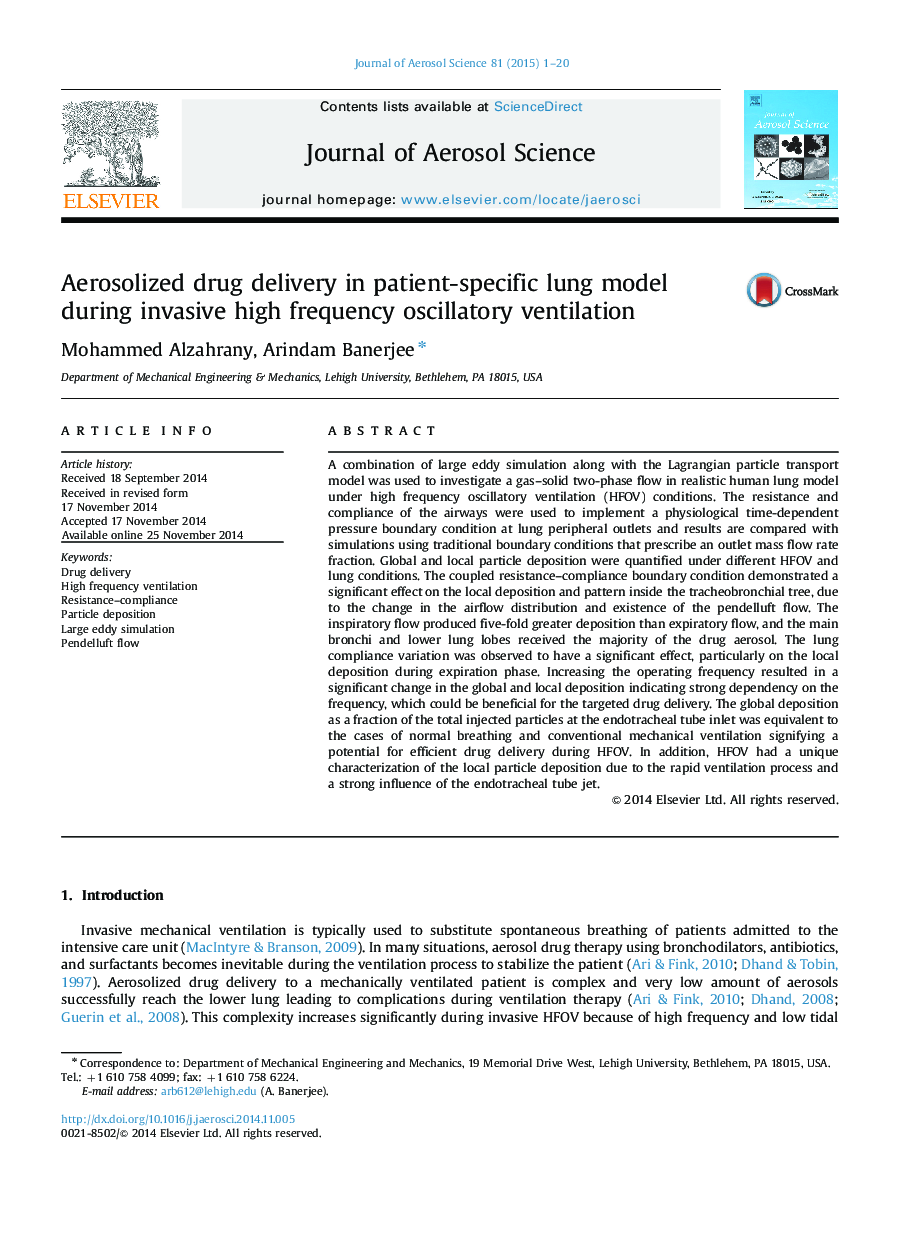| کد مقاله | کد نشریه | سال انتشار | مقاله انگلیسی | نسخه تمام متن |
|---|---|---|---|---|
| 4452269 | 1620742 | 2015 | 20 صفحه PDF | دانلود رایگان |
• Drug delivery under high frequency oscillatory ventilation (HFOV) was investigated.
• Use of physiological boundary conditions allowed accurate HFOV modeling.
• Deposition under HFOV efficient as in conventional ventilation.
• Deposition dependency on frequency could be beneficial for targeted drug delivery.
A combination of large eddy simulation along with the Lagrangian particle transport model was used to investigate a gas–solid two-phase flow in realistic human lung model under high frequency oscillatory ventilation (HFOV) conditions. The resistance and compliance of the airways were used to implement a physiological time-dependent pressure boundary condition at lung peripheral outlets and results are compared with simulations using traditional boundary conditions that prescribe an outlet mass flow rate fraction. Global and local particle deposition were quantified under different HFOV and lung conditions. The coupled resistance–compliance boundary condition demonstrated a significant effect on the local deposition and pattern inside the tracheobronchial tree, due to the change in the airflow distribution and existence of the pendelluft flow. The inspiratory flow produced five-fold greater deposition than expiratory flow, and the main bronchi and lower lung lobes received the majority of the drug aerosol. The lung compliance variation was observed to have a significant effect, particularly on the local deposition during expiration phase. Increasing the operating frequency resulted in a significant change in the global and local deposition indicating strong dependency on the frequency, which could be beneficial for the targeted drug delivery. The global deposition as a fraction of the total injected particles at the endotracheal tube inlet was equivalent to the cases of normal breathing and conventional mechanical ventilation signifying a potential for efficient drug delivery during HFOV. In addition, HFOV had a unique characterization of the local particle deposition due to the rapid ventilation process and a strong influence of the endotracheal tube jet.
Journal: Journal of Aerosol Science - Volume 81, March 2015, Pages 1–20
